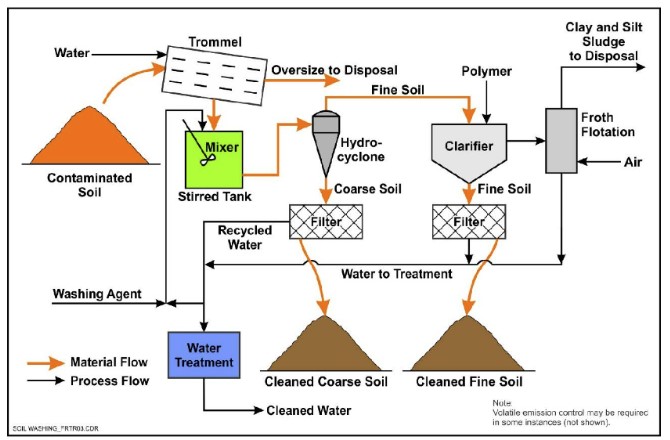Cutting-edge PFAS Treatment Solutions for Safer Water
The increasing occurrence of PFAS contamination in water products demands a critical examination of innovative treatment services. Advanced filtration innovations and unique chemical treatments existing encouraging avenues for lowering these relentless toxins. Additionally, arising bioremediation methods provide an even more lasting approach to tackling PFAS challenges. As regulatory frameworks continue to adjust, understanding the effectiveness and scalability of these remedies ends up being paramount. What ramifications do these advancements hold for public wellness and environmental restoration, and how can stakeholders efficiently implement them in diverse contexts?
Overview of PFAS Contamination
PFAS contamination has become a significant ecological and public wellness concern. Per- and polyfluoroalkyl materials (PFAS) are a team of artificial chemicals understood for their perseverance in the environment and body, leading them to be commonly described as "for life chemicals." These substances have actually been widely made use of in numerous industries, including firefighting foams, water-repellent materials, and food packaging, mostly due to their water- and grease-resistant buildings.
The extensive use of PFAS has actually led to their discovery in soil, water supplies, and even in the blood of people and animals. Researches have actually connected PFAS direct exposure to numerous wellness problems, consisting of developing effects in babies, immune system dysfunction, and numerous forms of cancer cells. In addition, the ecological perseverance of these substances complicates their destruction and removal, raising problems concerning long-lasting environmental impacts.
Governing bodies are progressively executing strict guidelines to check and decrease PFAS levels in drinking water and other ecological tools. As awareness of PFAS contamination expands, it has actually become important for communities and industries to seek reliable therapy remedies to mitigate direct exposure and protect public wellness.
Advanced Purification Technologies
As the seriousness to resolve PFAS contamination escalates, progressed purification technologies have actually become an essential element in the remediation efforts intended at eliminating these persistent chemicals from water sources. These innovations utilize innovative systems to properly target and record PFAS compounds, which are notoriously resistant to conventional therapy approaches.
One of the most encouraging strategies is making use of granular triggered carbon (GAC), which adsorbs PFAS molecules because of its high surface and permeable framework. This method has actually been widely carried out in both local and industrial setups, demonstrating considerable decreases in PFAS focus. Furthermore, ion exchange materials have actually acquired grip, particularly made to precisely bind PFAS ions from water, thus promoting their elimination.
Membrane layer purification technologies, such as reverse osmosis and nanofiltration, additionally show efficiency in PFAS removal by physically dividing pollutants from water - pfas management. These systems can attain high levels of purity, making them ideal for alcohol consumption water applications
Chemical Therapy Advancements
Many chemical therapy developments are Extra resources being explored to efficiently deal with PFAS contamination in water products. One promising method includes the use of innovative oxidation procedures (AOPs), which use powerful oxidants such as ozone, hydrogen peroxide, or chlorine dioxide incorporated with UV light to break down PFAS compounds right into much less harmful substances. This technique has actually shown effectiveness in research laboratory setups, revealing prospective for scalability in real-world applications.
One more innovative technique is the growth of ion-exchange materials especially designed to target PFAS. These resins can precisely adsorb PFAS substances from water, enabling their removal throughout therapy processes. Current advancements have actually boosted the performance and capability of these resins, making them a beneficial choice for water treatment facilities.
In addition, scientists are investigating using chemical representatives like persulfate and ferrous ions to improve the like this degradation of PFAS in polluted water. These agents can induce chain reaction that assist in the malfunction of persistent PFAS compounds.
Emerging Bioremediation Techniques
Current innovations in chemical therapy innovations have actually led the way for discovering bioremediation methods as a practical alternative for resolving PFAS contamination. Bioremediation utilizes the all-natural metabolic processes of microorganisms to break down or transform pollutants, making it an enticing method for dealing with persistent impurities like PFAS.
Arising methods in bioremediation include the use of genetically crafted microbes that can specifically target and break down PFAS compounds. These microbial stress are being established for their enhanced degradation capabilities, raising the performance of the removal procedure. Additionally, researchers are investigating the possibility of plant-assisted bioremediation, where particular plant varieties might uptake and withdraw PFAS from contaminated soil and water.
One more promising strategy is the application of bioaugmentation, which includes introducing beneficial microbes right into polluted atmospheres to increase the destruction of PFAS. This technique can help with faster removal timelines and improve total efficiency.

Regulatory Frameworks and Criteria
A comprehensive governing structure is essential for properly taking care this contact form of PFAS contamination and ensuring public health security. The enhancing recognition of per- and polyfluoroalkyl compounds (PFAS) as toxic wastes has actually triggered different government and state companies to establish requirements that regulate their existence in water materials. The U.S. Environmental Security Company (EPA) has established health advisories and is functioning towards establishing enforceable restrictions for PFAS in alcohol consumption water.
State-level guidelines vary substantially, with some states adopting more stringent standards than those suggested by the EPA. These policies commonly consist of maximum contaminant degrees (MCLs) for certain PFAS compounds, monitoring requirements, and reporting obligations for water energies. Furthermore, emerging structures focus on the removal of polluted websites, highlighting the need for reliable therapy technologies.

Final Thought
Finally, the advancement and application of cutting-edge PFAS treatment services are essential for attending to the prevalent concern of water contamination. Advanced purification modern technologies, chemical therapies, and emerging bioremediation techniques jointly offer a complex strategy to properly minimize and deteriorate PFAS levels. As regulatory structures proceed to develop, incorporating these innovations will certainly be important to guard public health and wellness and recover the honesty of polluted water sources, ultimately adding to a cleaner and more secure atmosphere.